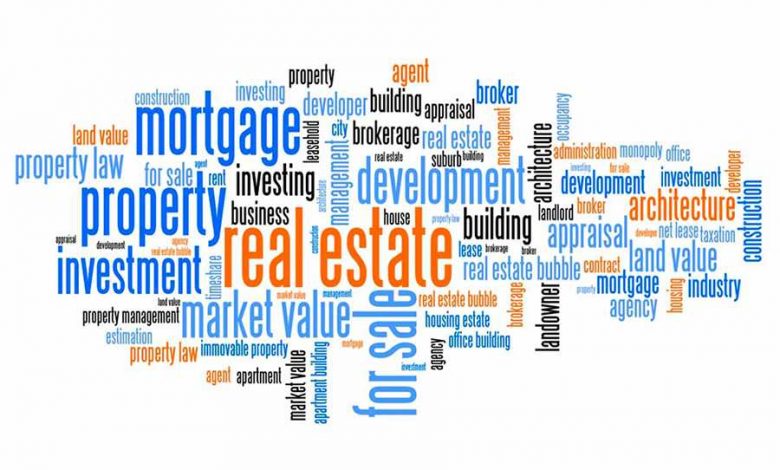11 Real Estate Terms You Should Be Familiar With

Real estate lingo is always changing, and the biggest factors behind the change are the new laws, taxes, and regulations. If you don’t know them now, you’ll know later. You’ll be up to your elbows in real estate terms you need to know before investing in real estate. Before you invest money in real estate properties like apartments in Thrissur, make sure you understand these terms. This information is for potential investors, not renters or renters seeking to buy.
1. Return on Investment
When it comes to real estate, ROI refers to the percentage of profit a property owner makes on his investment. ROI is useful in determining whether a real estate investment is worth pursuing.
In the example above, the investor made 12% on her money. But she paid for her tenant’s utilities and insurance in addition to the rent. Her actual return on investment doesn’t take into account these costs — only the income she received from renting out her property.
If you’re considering buying a piece of real estate as an investment, make sure you know which costs are included in your potential ROI.
2. Basic Sale Price (BSP) or Market Value (MV)
The BSP is the price that a buyer and a seller agree on in a real estate transaction. A lot of real estate agents and brokers use it in their listings, and you can see it on the lots in most real estate sales. It is the price at which the property would sell if all contingencies were removed and there was no competition for the sale–no other offers, no back-ordered materials, no last-minute inspection objections, no over-the-counter negotiations, etc.
The BSP is not what someone else thinks your home should sell for. It is not a speculative guess by a real estate agent or appraiser. The BSP is what both buyer and seller would agree upon if they had to buy or sell right then and there.
It’s called a “market value” because it’s used to determine how much a buyer contributes to the purchase price under current conditions.
3. Cash Flow
Cash flow (also called free cash flow and net income) is the income a property generates, after expenses, without the costs of depreciation and maintenance. The amount of cash flow generated by a property can be used to estimate its value.
If you’re thinking of buying an apartment, your first task is how to calculate cash flow (the yield). First, find out whether it’s a free-cash-flow property or not. A “free” property is one that has no mortgage payments or other monthly expenses. These include taxes, maintenance and minor capital improvements. Free cash flow is not a perfect metric for estimating value. Because there are many factors that affect the value of a property beyond cash flow.
4. HOA
HOA: Homeowner’s association: the group of people who own the property and collect the monthly dues that pay for all the upkeep.
The only way to understand HOA is to understand that it is a misnomer. The association isn’t run by homeowners, but by renters. Most of the properties in an HOA are rented at market rates
5. Appreciation
in real estate refers to an increase in the value of property over a period of time, and depreciation refers to a decrease in the value of the the property. Appreciation and depreciation (and their opposites) are important factors when determining the value of your property.
Appreciation is most noticeable when it comes to home selling prices
6. Turnkey Property
In the jargon of real estate, a turnkey property is one that can be taken over by a third party with no change to the value. In short, a turnkey property is a vacant shell ready to be furnished and turned into a comfortable dwelling for someone else.
It’s not always this simple. It’s easy to find turnkey properties that are not vacant shells but inhabited buildings. A building can also be a turnkey property, if it has been abandoned and is in a condition that makes it difficult or impossible for new tenants to move in. The best example of this is probably what happened to the New York City building where I live:
In 2006, the owner of my apartment wanted to sell it to someone who could afford the $5.5 million price tag. He found an investor who was willing to pay the asking price, but he wasn’t sure whether he could actually move in as agreed because his lawyer told him she couldn’t find any title insurance company willing to insure it. That meant that if he got stuck with the bill, he’d have no way of collecting from anyone who owed him money.
7. Built-up Area
Built-up area is the total area of all buildings, walls, and other structures on land that is dedicated to these purposes. A built-up area can be natural too; it can include rivers, lakes, and forests. But if there are no roads or other open spaces, built-up areas include everything within a city’s exterior boundaries (its “built-up area”).
Built-up area is often called “gross area” or “total built-up”.
8. Carpet Area
One of the most important terms in real estate is the carpet area. It refers to the size, in square feet, of the space you can cover with a carpet. One square foot is about the same as one square inch. If you are thinking of getting a carpet for your home, you should know that it’s not enough to buy a carpet that’s bigger than the space you are covering. You have to check how much carpet you can fit on each floor before deciding which size to buy.
The reason is simple: There are no carpets that fit all spaces. If there were, real estate agents would sell them instead of carpets. Or you could buy four small rugs that cover two floors each. Either way, each rug would have an area of 1 square foot per room.
9. Super Built-Up Area
Super built-up areas are areas where there is a high concentration of real estate investment properties. They have a high density of such properties, such as apartments and condos, as well as high-value single-family houses, like those in trendy neighbourhoods.
The term “super” refers to the super high density of these properties. According to the 2010 census, super built-up areas had an average of 2,600 housing units per square mile (roughly the same as the average for suburbs and small towns).
A well-known example is San Francisco’s Castro district, which has literally hundreds of restaurants and cafes within a small area, along with touristy shops and boutiques.
10. Floor Area Ratio
The floor area ratio is a measure of how much a property can be built up with a particular type of building. Which expressed as a fraction: the ratio of the area of the building to the entire size of the plot on which it sits.
For example, if you have a plot where one room will fit into every square meter, and your building fits in 100 square meters, your floor area ratio is (100/10000) = 0.1. If you build a building that covers 10 per cent more than the plot allows for, your floor area ratio is (100/10000) * 100 = 1.1.
If you build a building that covers 10 per cent less than the plot allows for, your floor area ratio is (100/10000) * (10-0.1) = 99.9
This sounds complicated but it’s really not. In fact, it’s kind of easy once you get used to working with fractions and percentages and decimals and suchlike.
11. Freehold property
Freehold property is just what it sounds like. It means that you own the land beneath your house, rather than just the house itself. This is an important distinction because it means you can sell or rent out the house, or do whatever else you want without worrying about someone claiming ownership of the land underneath. You can find a lot of freehold properties in flats in Calicut.


